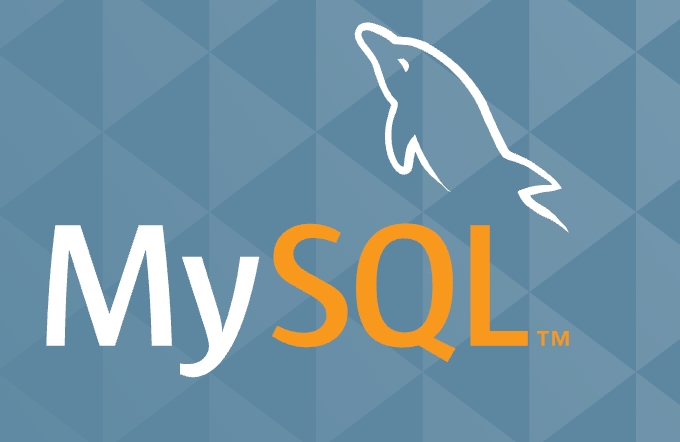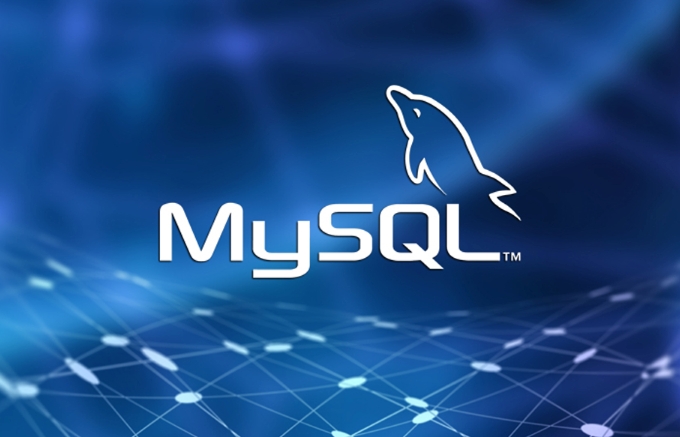Table partitioning is to distribute large tables in multiple physical files according to rules to improve performance. Its importance lies in optimizing queries and simplifying maintenance. When choosing a suitable partition key, you need to consider the data access mode: 1. Priority is used for RANGE partitioning with the time field; 2. Avoid frequent updates of fields; 3. Select hash or list partitions based on common fields for query. Common types include RANGE suitable for dates, LIST for enumeration values, evenly distributed HASH and KEY partitions. During maintenance, partitions need to be added, merged and deleted old data regularly. Note that the partition key should be the primary key part and the query must have a partition key to achieve cropping.

Table Partitioning is a very effective optimization method when processing large data sets in MySQL. It improves query performance and simplifies maintenance operations by logically dividing a large table into multiple smaller parts. However, to do a good job in partition management, the key is to understand the data access pattern and choose the appropriate partitioning strategy.

What is table partitioning? Why is it important?
MySQL table partitioning distributes the data of a large table in multiple physical files according to certain rules. Although it is still a table logically, from the storage level, each partition is independent. This is especially useful for large datasets, as it can:

- Improve query efficiency: only scan related partitions, not the entire table
- Speed ??up archive and deletion operations: just delete the entire partition
- Improve maintainability: such as backing up or re-indexing a partition
However, if the partitioning strategy is unreasonable, it may bring additional overhead and even affect performance.
How to choose the right partition key?
The selection of partition key directly affects the effect of partition. Here are some common suggestions:

- Try to use the time field : If you frequently query the time range, such as log data, use
RANGEorRANGE COLUMNSpartition, using the date as the partition key is a good choice. - Avoid frequent updates : For example, user ID, if changed frequently, will cause records to move between different partitions, increasing I/O and lock competition.
- Consider query mode : If your query is mostly based on a certain field, such as region, category, etc., you can use these fields as the basis for hashing or list partitioning.
For example: You have an order table with millions of new records added every day, and the query is mainly concentrated on the data in recent days. In this case, it is very appropriate to use the order creation time to perform RANGE partitioning.
Common partition types and applicable scenarios
MySQL supports a variety of partitioning methods, each with its own characteristics and scope of application:
RANGE Partition
According to the interval of the value, data in obvious order are suitable, such as dates, numbers, etc. For example, put data before 2023 in one partition, and put data in another partition in 2024.LIST Partition
Grouped by predefined discrete values, suitable for enumerated fields. For example, sales data are divided by province, and each province is allocated a partition.HASH partition
Calculate the partition number based on the hash function, which is suitable for situations where data is desired to be distributed evenly. For example, using user ID as hash partitions can make the data more evenly spread among each partition.KEY Partition
Similar to HASH, but determined by MySQL internal algorithms, all column types except TEXT/BLOB are supported.
?? Note: Once the partition method is specified after the table is created, it cannot be changed at will unless the table is rebuilt. So you have to plan well in the early stage of design.
Partition maintenance and precautions
Partitioning is not a one-time thing and requires regular maintenance and adjustment:
- Add a new partition : In particular, the RANGE partition must be added manually when the data is outside the current partition range.
- Merge/Split Partitions : You can merge or split partitions through
ALTER TABLE ... REORGANIZE PARTITION, but pay attention to data consistency. - Delete old partitions : For historical data, you can directly delete the corresponding partition, which is much more efficient than DELETE operations.
- Monitor partition usage : Use
SHOW CREATE TABLEto view the partition structure, or view the size and number of rows of each partition through an information schema table (such asINFORMATION_SCHEMA.PARTITIONS).
In addition, please note:
- The partition field must be part of the table's primary key (if it is the InnoDB engine)
- The query statement should be equipped with partition keys as much as possible, otherwise the advantage of partitioning cannot be taken advantage of (called "partition cropping")
Let's summarize
Table partitioning is an important tool for optimizing large data scenarios, but the premise is that you must be clear about your query and write mode. Only by choosing the right partition key, reasonably designing the partition structure, and regularly maintaining it can it truly play its role. Don't underestimate this step. Sometimes the performance gap can be several orders of magnitude.
Basically that's it.
The above is the detailed content of Managing table partitioning for large datasets in MySQL. For more information, please follow other related articles on the PHP Chinese website!

Hot AI Tools

Undress AI Tool
Undress images for free

Undresser.AI Undress
AI-powered app for creating realistic nude photos

AI Clothes Remover
Online AI tool for removing clothes from photos.

Clothoff.io
AI clothes remover

Video Face Swap
Swap faces in any video effortlessly with our completely free AI face swap tool!

Hot Article

Hot Tools

Notepad++7.3.1
Easy-to-use and free code editor

SublimeText3 Chinese version
Chinese version, very easy to use

Zend Studio 13.0.1
Powerful PHP integrated development environment

Dreamweaver CS6
Visual web development tools

SublimeText3 Mac version
God-level code editing software (SublimeText3)
 Connecting to MySQL Database Using the Command Line Client
Jul 07, 2025 am 01:50 AM
Connecting to MySQL Database Using the Command Line Client
Jul 07, 2025 am 01:50 AM
The most direct way to connect to MySQL database is to use the command line client. First enter the mysql-u username -p and enter the password correctly to enter the interactive interface; if you connect to the remote database, you need to add the -h parameter to specify the host address. Secondly, you can directly switch to a specific database or execute SQL files when logging in, such as mysql-u username-p database name or mysql-u username-p database name
 Handling character sets and collations issues in MySQL
Jul 08, 2025 am 02:51 AM
Handling character sets and collations issues in MySQL
Jul 08, 2025 am 02:51 AM
Character set and sorting rules issues are common when cross-platform migration or multi-person development, resulting in garbled code or inconsistent query. There are three core solutions: First, check and unify the character set of database, table, and fields to utf8mb4, view through SHOWCREATEDATABASE/TABLE, and modify it with ALTER statement; second, specify the utf8mb4 character set when the client connects, and set it in connection parameters or execute SETNAMES; third, select the sorting rules reasonably, and recommend using utf8mb4_unicode_ci to ensure the accuracy of comparison and sorting, and specify or modify it through ALTER when building the library and table.
 Implementing Transactions and Understanding ACID Properties in MySQL
Jul 08, 2025 am 02:50 AM
Implementing Transactions and Understanding ACID Properties in MySQL
Jul 08, 2025 am 02:50 AM
MySQL supports transaction processing, and uses the InnoDB storage engine to ensure data consistency and integrity. 1. Transactions are a set of SQL operations, either all succeed or all fail to roll back; 2. ACID attributes include atomicity, consistency, isolation and persistence; 3. The statements that manually control transactions are STARTTRANSACTION, COMMIT and ROLLBACK; 4. The four isolation levels include read not committed, read submitted, repeatable read and serialization; 5. Use transactions correctly to avoid long-term operation, turn off automatic commits, and reasonably handle locks and exceptions. Through these mechanisms, MySQL can achieve high reliability and concurrent control.
 Managing Character Sets and Collations in MySQL
Jul 07, 2025 am 01:41 AM
Managing Character Sets and Collations in MySQL
Jul 07, 2025 am 01:41 AM
The setting of character sets and collation rules in MySQL is crucial, affecting data storage, query efficiency and consistency. First, the character set determines the storable character range, such as utf8mb4 supports Chinese and emojis; the sorting rules control the character comparison method, such as utf8mb4_unicode_ci is case-sensitive, and utf8mb4_bin is binary comparison. Secondly, the character set can be set at multiple levels of server, database, table, and column. It is recommended to use utf8mb4 and utf8mb4_unicode_ci in a unified manner to avoid conflicts. Furthermore, the garbled code problem is often caused by inconsistent character sets of connections, storage or program terminals, and needs to be checked layer by layer and set uniformly. In addition, character sets should be specified when exporting and importing to prevent conversion errors
 Using Common Table Expressions (CTEs) in MySQL 8
Jul 12, 2025 am 02:23 AM
Using Common Table Expressions (CTEs) in MySQL 8
Jul 12, 2025 am 02:23 AM
CTEs are a feature introduced by MySQL8.0 to improve the readability and maintenance of complex queries. 1. CTE is a temporary result set, which is only valid in the current query, has a clear structure, and supports duplicate references; 2. Compared with subqueries, CTE is more readable, reusable and supports recursion; 3. Recursive CTE can process hierarchical data, such as organizational structure, which needs to include initial query and recursion parts; 4. Use suggestions include avoiding abuse, naming specifications, paying attention to performance and debugging methods.
 Strategies for MySQL Query Performance Optimization
Jul 13, 2025 am 01:45 AM
Strategies for MySQL Query Performance Optimization
Jul 13, 2025 am 01:45 AM
MySQL query performance optimization needs to start from the core points, including rational use of indexes, optimization of SQL statements, table structure design and partitioning strategies, and utilization of cache and monitoring tools. 1. Use indexes reasonably: Create indexes on commonly used query fields, avoid full table scanning, pay attention to the combined index order, do not add indexes in low selective fields, and avoid redundant indexes. 2. Optimize SQL queries: Avoid SELECT*, do not use functions in WHERE, reduce subquery nesting, and optimize paging query methods. 3. Table structure design and partitioning: select paradigm or anti-paradigm according to read and write scenarios, select appropriate field types, clean data regularly, and consider horizontal tables to divide tables or partition by time. 4. Utilize cache and monitoring: Use Redis cache to reduce database pressure and enable slow query
 Designing a Robust MySQL Database Backup Strategy
Jul 08, 2025 am 02:45 AM
Designing a Robust MySQL Database Backup Strategy
Jul 08, 2025 am 02:45 AM
To design a reliable MySQL backup solution, 1. First, clarify RTO and RPO indicators, and determine the backup frequency and method based on the acceptable downtime and data loss range of the business; 2. Adopt a hybrid backup strategy, combining logical backup (such as mysqldump), physical backup (such as PerconaXtraBackup) and binary log (binlog), to achieve rapid recovery and minimum data loss; 3. Test the recovery process regularly to ensure the effectiveness of the backup and be familiar with the recovery operations; 4. Pay attention to storage security, including off-site storage, encryption protection, version retention policy and backup task monitoring.
 Optimizing complex JOIN operations in MySQL
Jul 09, 2025 am 01:26 AM
Optimizing complex JOIN operations in MySQL
Jul 09, 2025 am 01:26 AM
TooptimizecomplexJOINoperationsinMySQL,followfourkeysteps:1)EnsureproperindexingonbothsidesofJOINcolumns,especiallyusingcompositeindexesformulti-columnjoinsandavoidinglargeVARCHARindexes;2)ReducedataearlybyfilteringwithWHEREclausesandlimitingselected






